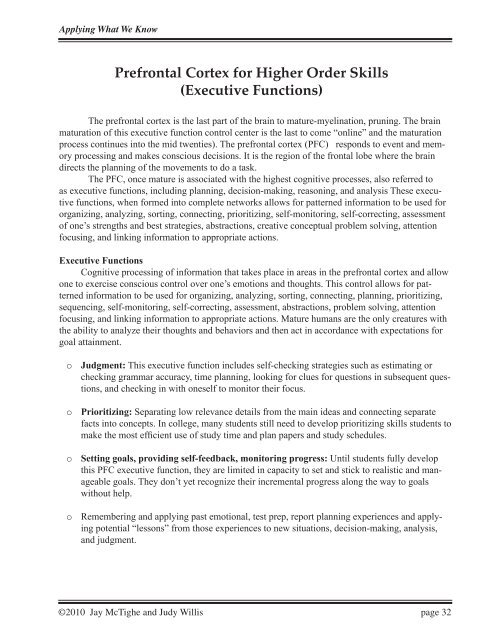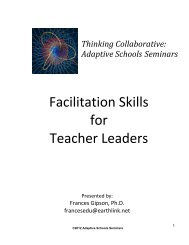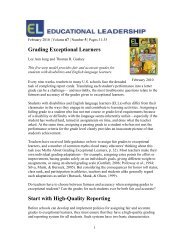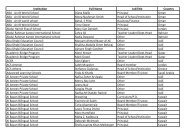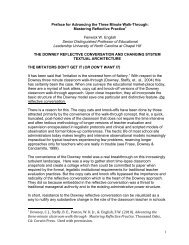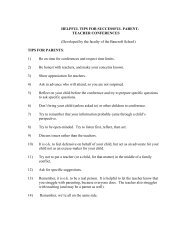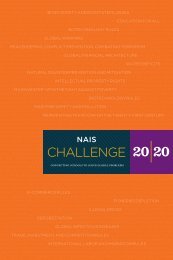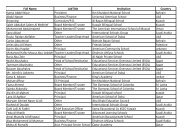Joint Presentation with Judy Willis - NESA
Joint Presentation with Judy Willis - NESA
Joint Presentation with Judy Willis - NESA
You also want an ePaper? Increase the reach of your titles
YUMPU automatically turns print PDFs into web optimized ePapers that Google loves.
Applying What We Know<br />
Prefrontal Cortex for Higher Order Skills<br />
(Executive Functions)<br />
The prefrontal cortex is the last part of the brain to mature-myelination, pruning. The brain<br />
maturation of this executive function control center is the last to come “online” and the maturation<br />
process continues into the mid twenties). The prefrontal cortex (PFC) responds to event and memory<br />
processing and makes conscious decisions. It is the region of the frontal lobe where the brain<br />
directs the planning of the movements to do a task.<br />
The PFC, once mature is associated <strong>with</strong> the highest cognitive processes, also referred to<br />
as executive functions, including planning, decision-making, reasoning, and analysis These executive<br />
functions, when formed into complete networks allows for patterned information to be used for<br />
organizing, analyzing, sorting, connecting, prioritizing, self-monitoring, self-correcting, assessment<br />
of one’s strengths and best strategies, abstractions, creative conceptual problem solving, attention<br />
focusing, and linking information to appropriate actions.<br />
Executive Functions<br />
Cognitive processing of information that takes place in areas in the prefrontal cortex and allow<br />
one to exercise conscious control over one’s emotions and thoughts. This control allows for patterned<br />
information to be used for organizing, analyzing, sorting, connecting, planning, prioritizing,<br />
sequencing, self-monitoring, self-correcting, assessment, abstractions, problem solving, attention<br />
focusing, and linking information to appropriate actions. Mature humans are the only creatures <strong>with</strong><br />
the ability to analyze their thoughts and behaviors and then act in accordance <strong>with</strong> expectations for<br />
goal attainment.<br />
o Judgment: This executive function includes self-checking strategies such as estimating or<br />
checking grammar accuracy, time planning, looking for clues for questions in subsequent questions,<br />
and checking in <strong>with</strong> oneself to monitor their focus.<br />
o Prioritizing: Separating low relevance details from the main ideas and connecting separate<br />
facts into concepts. In college, many students still need to develop prioritizing skills students to<br />
make the most efficient use of study time and plan papers and study schedules.<br />
o Setting goals, providing self-feedback, monitoring progress: Until students fully develop<br />
this PFC executive function, they are limited in capacity to set and stick to realistic and manageable<br />
goals. They don’t yet recognize their incremental progress along the way to goals<br />
<strong>with</strong>out help.<br />
o Remembering and applying past emotional, test prep, report planning experiences and applying<br />
potential “lessons” from those experiences to new situations, decision-making, analysis,<br />
and judgment.<br />
©2010 Jay McTighe and <strong>Judy</strong> <strong>Willis</strong> page 32


